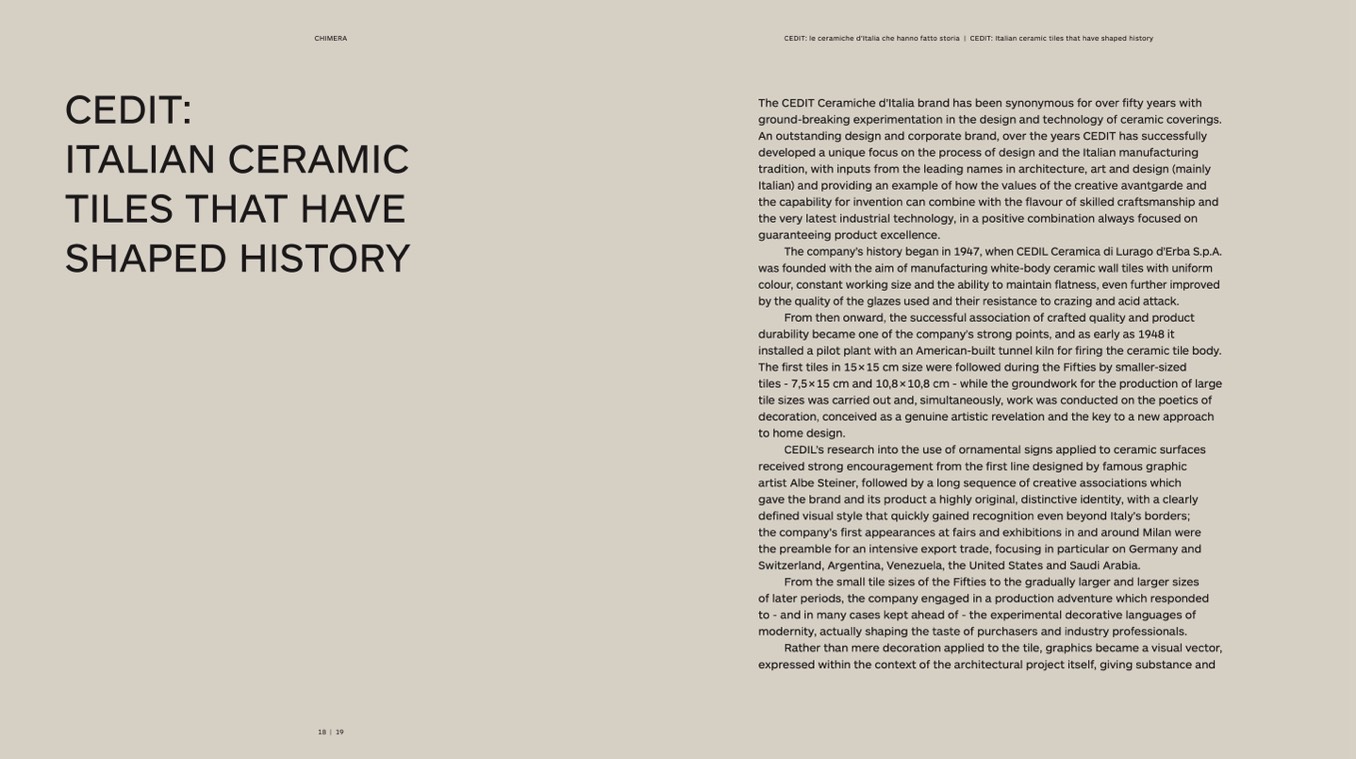
CEDIT:
ITALIAN CERAMIC
TILES THAT HAVE
SHAPED HISTORY
The CEDIT Ceramiche d’Italia brand has been synonymous for over fifty years with
ground-breaking experimentation in the design and technology of ceramic coverings.
An outstanding design and corporate brand, over the years CEDIT has successfully
developed a unique focus on the process of design and the Italian manufacturing
tradition, with inputs from the leading names in architecture, art and design (mainly
Italian) and providing an example of how the values of the creative avantgarde and
the capability for invention can combine with the flavour of skilled craftsmanship and
the very latest industrial technology, in a positive combination always focused on
guaranteeing product excellence.
The company’s history began in 1947, when CEDIL Ceramica di Lurago d’Erba S.p.A.
was founded with the aim of manufacturing white-body ceramic wall tiles with uniform
colour, constant working size and the ability to maintain flatness, even further improved
by the quality of the glazes used and their resistance to crazing and acid attack.
From then onward, the successful association of crafted quality and product
durability became one of the company’s strong points, and as early as 1948 it
installed a pilot plant with an American-built tunnel kiln for firing the ceramic tile body.
The first tiles in 15 × 15 cm size were followed during the Fifties by smaller-sized
tiles - 7,5×15 cm and 10,8×10,8 cm - while the groundwork for the production of large
tile sizes was carried out and, simultaneously, work was conducted on the poetics of
decoration, conceived as a genuine artistic revelation and the key to a new approach
to home design.
CEDIL’s research into the use of ornamental signs applied to ceramic surfaces
received strong encouragement from the first line designed by famous graphic
artist Albe Steiner, followed by a long sequence of creative associations which
gave the brand and its product a highly original, distinctive identity, with a clearly
defined visual style that quickly gained recognition even beyond Italy’s borders;
the company’s first appearances at fairs and exhibitions in and around Milan were
the preamble for an intensive export trade, focusing in particular on Germany and
Switzerland, Argentina, Venezuela, the United States and Saudi Arabia.
From the small tile sizes of the Fifties to the gradually larger and larger sizes
of later periods, the company engaged in a production adventure which responded
to - and in many cases kept ahead of - the experimental decorative languages of
modernity, actually shaping the taste of purchasers and industry professionals.
Rather than mere decoration applied to the tile, graphics became a visual vector,
expressed within the context of the architectural project itself, giving substance and
CHIMERA
CEDIT: le ceramiche d’Italia che hanno fatto storia | CEDIT: Italian ceramic tiles that have shaped history
18 | 19

